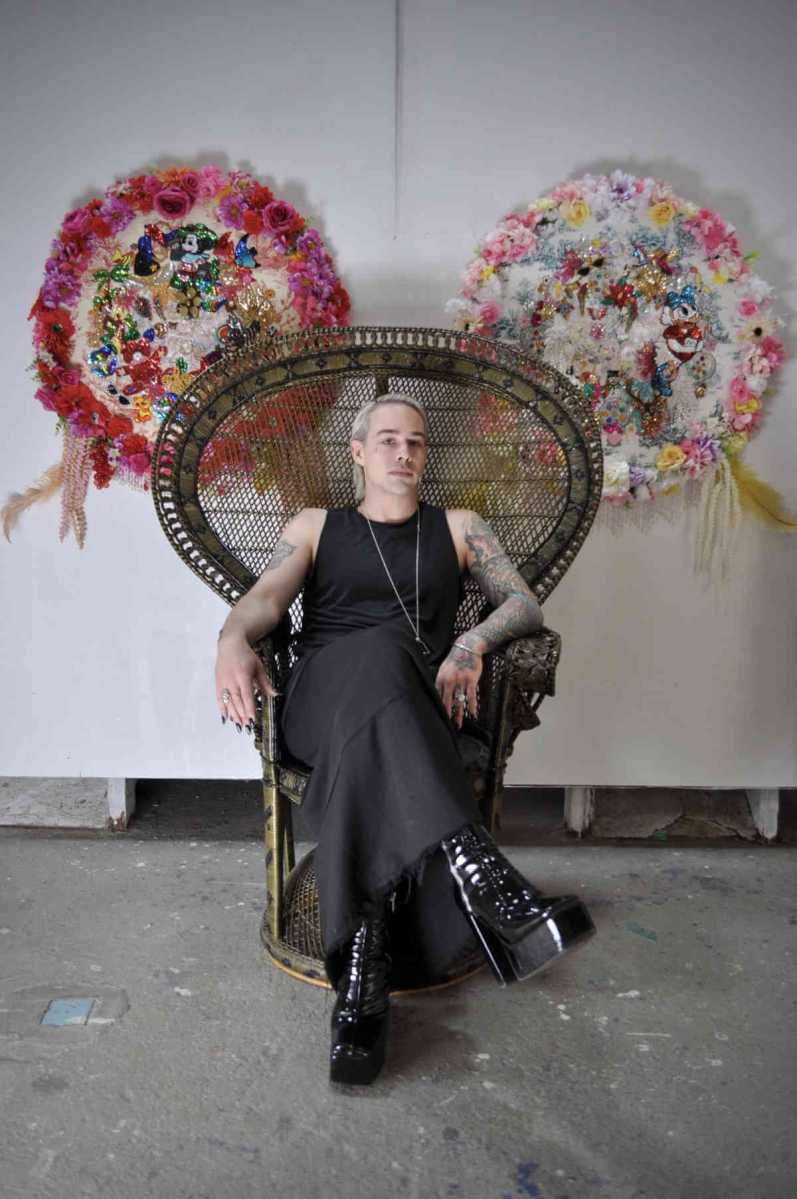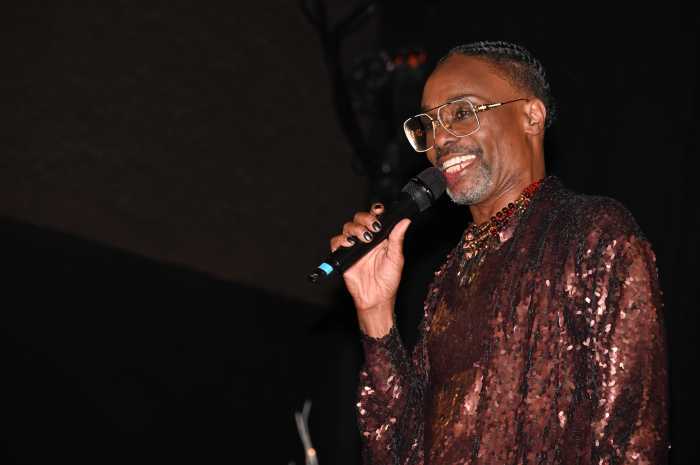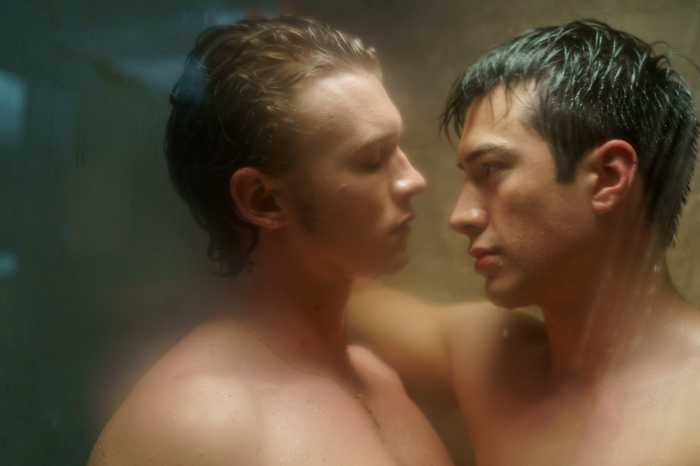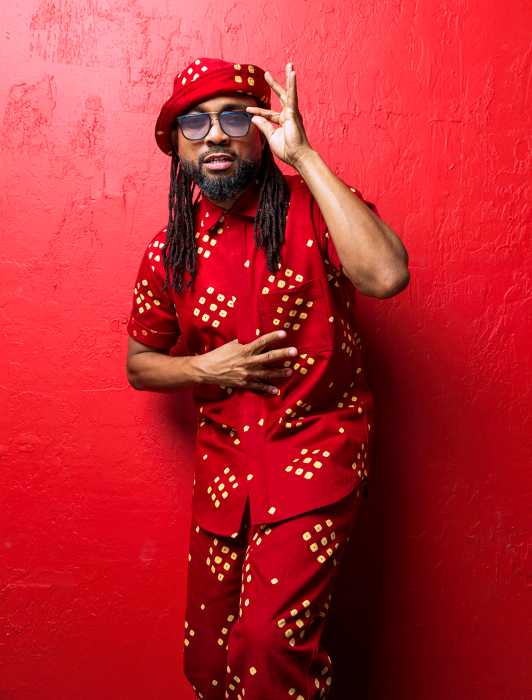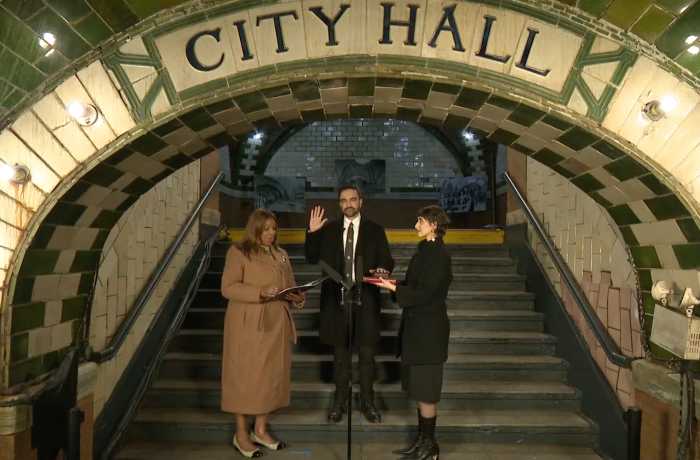When I asked the Brooklyn-based visual artist Max Colby, who identifies as trans non-binary and queer, if the folks back home had any idea what to make of the young Max growing up, there followed a very pregnant pause.
“No.”
“When I was 14,” Colby explained, “my hair was eight inches tall and all shaved on the sides and fell in the back to my shoulders. I wore three layers of foundation that were pale and full eye make-up. I was skinny and had to wear jeans for young girls. I grew up in Wisconsin.”
It all sounded pretty Goth-witchy-realness, first-time-at-a-ball to me.
“I’m forever Goth,” Colby rejoined. “Just not the mall-rat Goth kid I used to be.”
Colby, 29, who was born in West Palm Beach, received a BFA from the School of the Museum of Fine Arts in Boston and Tufts University, and is a 2018-2019 Leslie-Lohman Museum Queer Artists’ Fellow. Originally trained as a papermaker, Colby told me, “In those years my practice was steeped in historic and scientific research on fibers.”
Their work these days uses mostly sewn fabric and found textiles to create highly intricate and beautifully phallocentric throw pillows (my description) and other unusual and often happy-making pieces. Colby is a sweetheart, but a sweetheart with a soul like a steel-belted, wide-track radial from Michelin or Goodyear. By which I mean tough as hell and going places.
When recently I took three buses from East Flatbush to Ridgewood to make a studio visit, I got lost, and then arrived there, oh, like 70 minutes late with a dead cellphone in my sweaty hand. Colby was solicitous and kind enough to come out onto the block and find me. Inside, within a rabbit warren of artists’ studios, they offered me a bottle of water and we sat and talked art in their modestly-sized and entirely white workroom that felt like being inside a huge sugar cube. A whole rainbow of spools of thread stood at attention in straight rows next to a white sewing machine. Everything was spic and span and orderly, including several dozen recent works of art on the white presentation shelving that covered two walls.
Colby was leaving in a few days for a month-long residency upstate at the artist-run Wassaic Project about halfway between Millbrook and the Connecticut border. They would be back for a few days and then off again to the Museum Rijswijk in The Netherlands to show work as part of the sixth annual Rijswijk Textile Biennial along with 21 other artists from around the world.
Later that week, when I asked via email how Colby would describe their own work, I got this in reply: “My main focus in the studio for the past year has been a series of sculptures titled ‘They Consume Each Other.’ I’m interested in exploring notions of ceremony and ritual through American-Christian performance and producing queer, fantastical alternatives. There’s an immediate juxtaposition here — these cultural references routinely establish and reinforce violence against queer bodies through their very ceremonial and ritual performance. Yet the sculptures live as altar-pieces, while the wall pieces live as funeral wreath-cum-award.”
That may give you some sense of Colby’s intellectual heft and, though it may sound something like the way many artists write for grant applications — writing about art being akin perhaps to singing about the sea — I quote it in its entirety because it shows Colby in the vanguard of a new generation of fine artists whose work, whether abstract or figurative, is an articulation and demonstration of personal and cultural shifts in both the performance and perceptions of gender.

ornaments, polyester batting, thread; 9 x 9 x 16”.
When Colby and I next spoke, it was at the tail end of a week in which three transgender women were murdered in three separate cities in the United States. All were people of color. All were killed by handguns. Also that week, the Trump administration made clear its proposal to undo healthcare and insurance protections banning discrimination against trans people enacted during the Obama presidency.
“My friends and I were just talking about the timing of this,” Colby told me. “With all the efforts among some states to cap abortion rights right now, it seems pretty opportunistic of them. What protections there are for trans people are not that old, you know. We’ve been around forever and there are always these counters to it. I think what is different and powerful now is the strong contingent of visible and trans people who are responding.
“All of the recent language which rejects the binary has had an enormous impact on me. I remember telling my family at 13 that I wanted to transition, male to female. I knew no other dialogue but a binary one — you were either cis and gay/ lesbian or straight, or trans and female or male. At that time, you couldn’t do anything without a diagnosis from a psychiatrist, and as the conversation unfolded transitioning and my trans identity was cut off, so I retreated and lived as cis for 15 years. It’s only through this very recent language around gender that I’ve been able to fully embrace myself, my identity, and my work which was trying to get me to come out again as trans before I could even see it.”
As for the Stonewall 50 anniversary, Colby said, “It’s important to remember that trans women of color gave us the Stonewall riots and Pride. Our contemporary understanding of public assembly and resistance as a body of queers is indebted to them. Yet this is the demographic that continues to be denied basic human rights. Pride has been corporatized and co-opted. We must transparently tell history and refocus our efforts. It is not better — or even livable for all of us.”
Colby continued, “When I was young, I didn’t have any trans role models. There wasn’t any dialogue. We are still less grievable by society.”
I wondered if their new multi-colored funeral wreaths spoke to this “ungrievability?”
“The way in which my work has gravitated recently to pieces that deal with ceremonies around someone’s death, it was an intentional movement, but it’s not a coincidence. It’s something I think about and these references are in some ways inevitable in my work.”
I asked how — when their work, although beautiful, is so charged with such intense personal and community meanings — they relax.
Colby laughed and said, “Getting my looks together, shopping, curating that stuff, that’s fun for me. It’s time I get totally to myself where I’m able to play.”
Find more information on Max Colby’s art at maxcolby.com.


